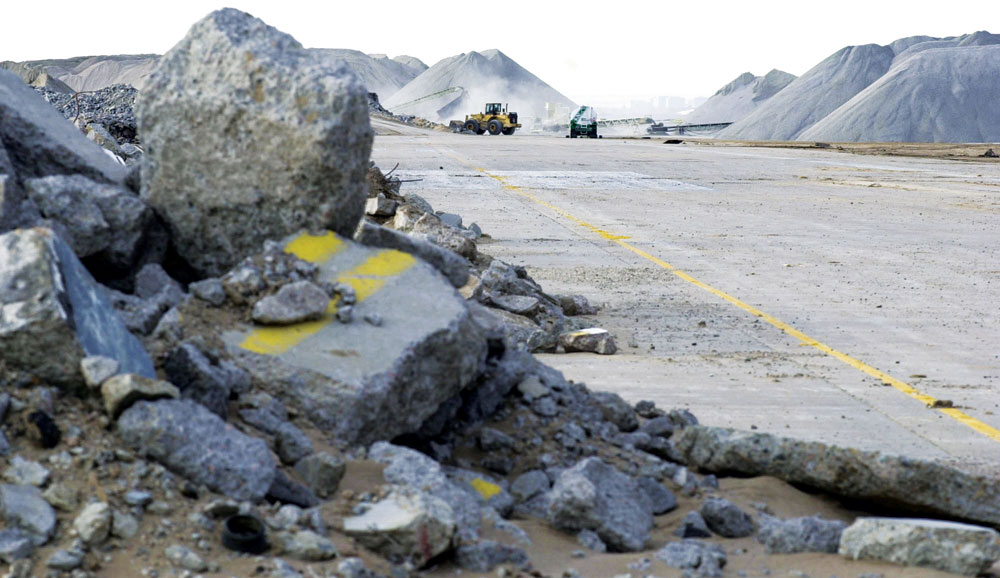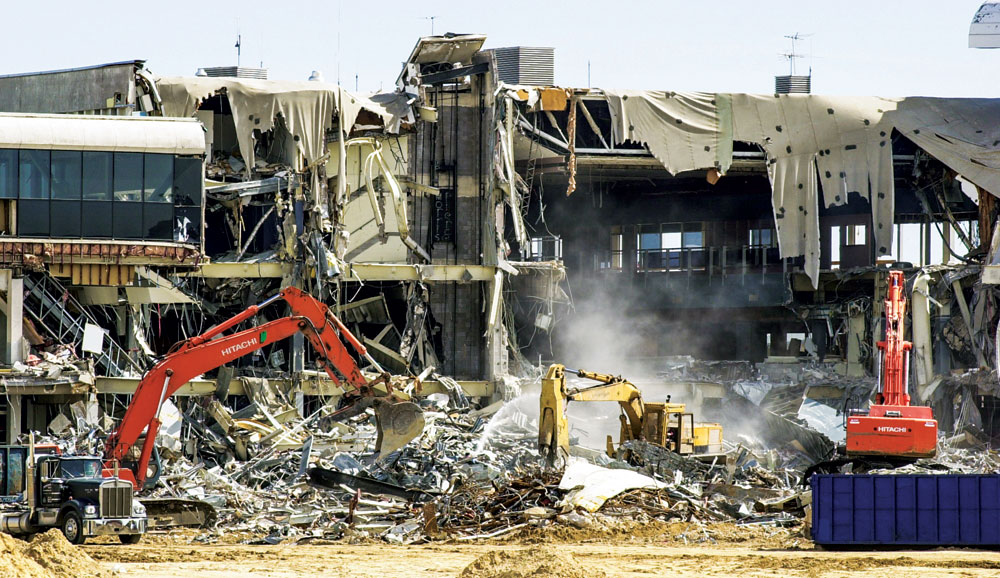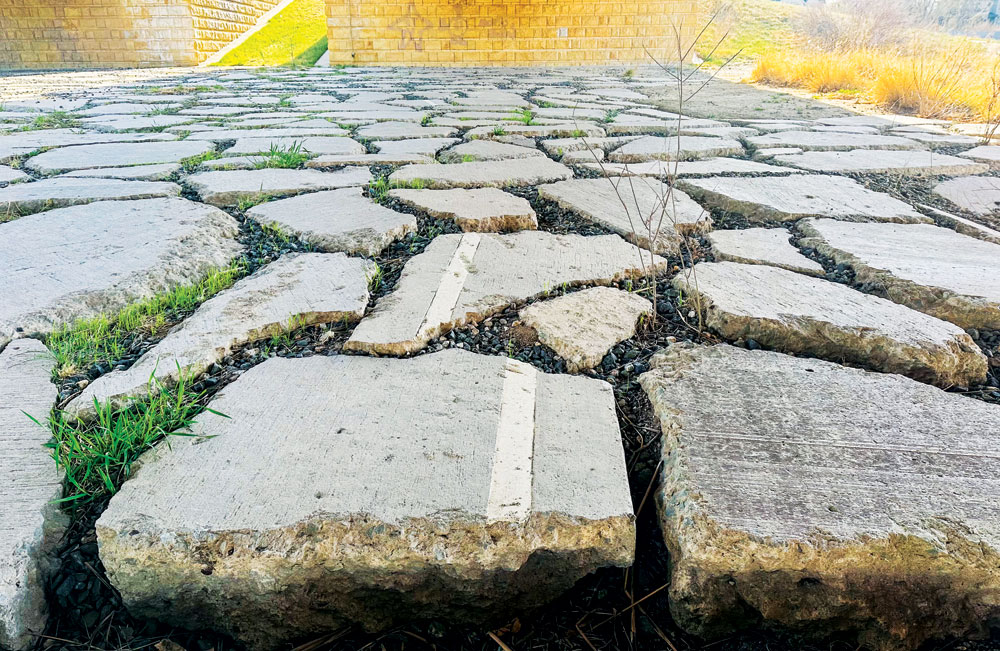
A photo taken in March 2000 shows the removal and processing of about 1,000 acres of pavement that made up the runways at the former Stapleton International Airport, which was shut down in 1995. In total, 6.5 million tons of concrete were recycled and repurposed due to the efforts of the city and developers. Front Porch file photo by Steve Larson
When Stapleton International Airport closed 30 years ago, one of the largest demolition projects in the nation started. In 2000, the demolition cleared the way for a pedestrian-scale, neighborhood retail center with a grocery store, rental and for-sale housing, offices, and civic facilities east of 29th Ave. and Quebec St., in the area once occupied by the rental car companies.
A regional retail center was under construction north of the United Airlines Flight Training Center, with completion of both retail centers (East 29th Avenue Town Center and Quebec Center) in early 2002. A nearly constant stream of heavy trucks moved up and down the site as the first of millions of tons of concrete rubble was broken up and transported to the northern portion of Stapleton, using the old runways as haul routes to prevent the operation from impacting local traffic.

A photo taken in the summer of 2000 shows the demolition of part of the old Stapleton International Airport’s concourse building, part of the 4.5 million square feet of structures left on the site. Front Porch file photo by Steve Larson
There the rubble was reprocessed and offered for sale by Recycled Materials, Inc., the Arvada company that oversaw the removal of approximately 1,000 acres of the former airport pavement at no cost to the City of Denver in exchange for the right to sell that material on the recycled market.
Project Manager Rick Givan noted that the layers of material in the pavement ran three to four feet in depth. The company’s work at Stapleton attracted the attention of officials from the former Soviet Union, who came to Colorado to see the recycling operation and consult with the company about their plans to demolish and recycle aging apartment buildings in Moscow.
As of May 2000, 650,000 tons of paving material had been removed from the site. The former runways were “resurrected” in the form of reprocessed material utilized by contractors working at Denver International Airport, Buckley Air National Guard Base, E-470, and the Rocky Mountain Arsenal National Wildlife Refuge.

Current day signs of the recycling project that repurposed over 1,000 acres of concrete runway from the Stapleton International Airport. Front Porch photo by Christie Gosch
On the day Stapleton closed in February 1995, the airport listed approximately 4.5 million square feet of building space spread over nearly 150 structures on 4,700 acres. Half of that space was accounted for by the terminal and the five concourses.
Hangars that were too costly or too dilapidated for re-use were demolished while others were converted into offices and other commercial spaces. The former FAA control tower was also preserved in its location and is now home to FlyteCo Brewing.
The recycling efforts continued for the next decade and in 2011 drivers passing the old parking garage on MLK Jr. Blvd., just west of Central Park Blvd., could see it gradually disappearing.
Ninety-eight percent of what was torn down was recycled, tested, and cleaned up prior to the demolition. Because it was and is a populated area, explosives or a wrecking ball were not considered as viable due to the possibility that a piece of concrete could end up out in the street.
Givan described the equipment they used as looking like the jaw and teeth of a Tyrannosaurus Rex that grabs “mouthfuls” of concrete. “You open it hydraulically and it has ridges of triangular pointed steel, and we close it on the concrete and then you turn the hydraulic on and close the jaw and it actually pulverizes the concrete,” he explained.
When the runways were removed from the old airport, 6.5 million tons of concrete were carried to Recycled Materials Inc.’s satellite recycling site on 56th Avenue at the north end of Stapleton. In 2011 less than half a million tons remained and most of it was spoken for, Givan said. He added, “Make sure that credit is given where credit is due,” Givan points out. “It’s the City, in partnership with Forest City, who really put the recycle priorities on these projects. They’ve been very conscientious about it, and it’s really been a successful venture for the recycling industry as a result.
In 2025, there’s little left of the recycling effort to see other than pieces of runway concrete throughout the open spaces in Central Park—a nod to the history and the work that went into turning an old airport into a new city neighborhood.




0 Comments